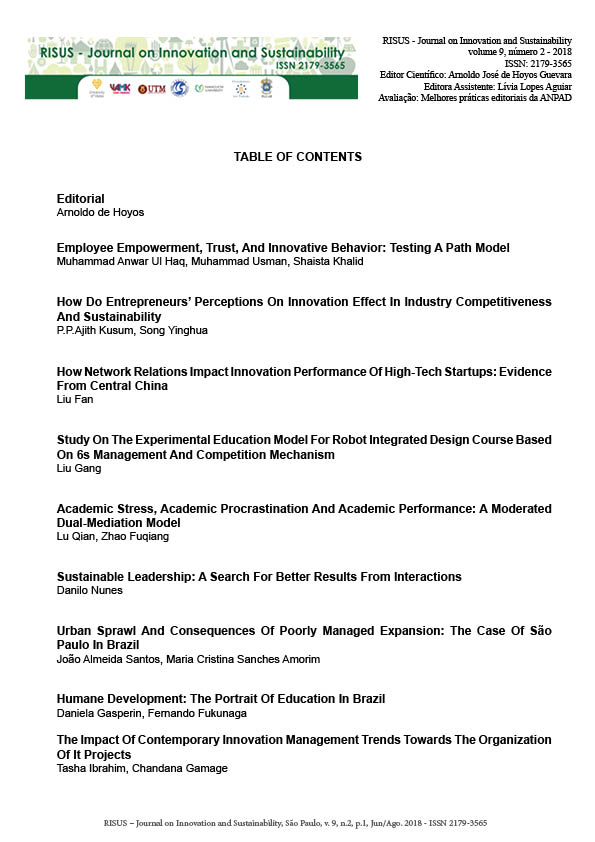URBAN SPRAWL AND CONSEQUENCES OF POORLY MANAGED EXPANSION: THE CASE OF SÃO PAULO IN BRAZIL
DOI:
https://doi.org/10.24212/2179-3565.2018v9i2p55-66Palabras clave:
Urban sprawl, Land, Urban centers, São Paulo City.Resumen
Urban sprawl is a natural process of the cities‘ growth as consequence population growth. The population need a food, water and housing for survival and for its species to continue populating the land. The literature existing about urban sprawl considers a population growth causes impacts on people’s quality of life because they consume more food, water, electricity, transport for their locomotion, and other products and services. The fact is the urban sprawl and population growth are directly linked and can not be separated in any study on the subject. Sprawl is the process in which the spread of development across the landscape far outpaces population growth. This is article show the process Urban sprawl and consequences of poorly managed expansion the city São Paulo – Brazil. The phenomenon of sprawl there are several common characteristics pervading time in history from development the city of São Paulo. The phenomenon of sprawl the city of São Paulo is a common the any big city, the result of a complex set of interrelated socioeconomic and cultural forces. For example, land value is often considered the main driver of socioeconomic development patterns. However, at any time in the current or ancient history, land value is lower on the periphery and very expensive in urban centers. Other factors contribute to the occupation of land on the outskirts of large cities: existence of water and the quality of land for agriculture, the cost of keeping the dwelling lower when compared to the cost of the city center, the size of the land is larger at the beginning of the occupation.Descargas
Publicado
2018-06-30
Número
Sección
Papers
Licencia
This Journal is licensed under a Creative Commons Attribution-Non Commercial-No Derivers 4.0 International license.
1.The author (s) authorize the publication of the article in the journal;
2.The author (s) warrant that the contribution is original and unpublished and is not in the process of being evaluated in other journal (s);
3. The journal is not responsible for the opinions, ideas and concepts emitted in the texts, as they are the sole responsibility of its author (s);
4. The editors are entitled to make textual adjustments and to adapt the articles to the standards of publication.


